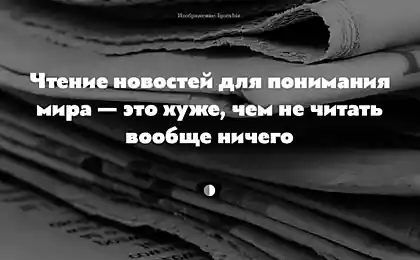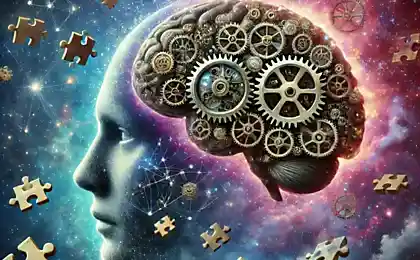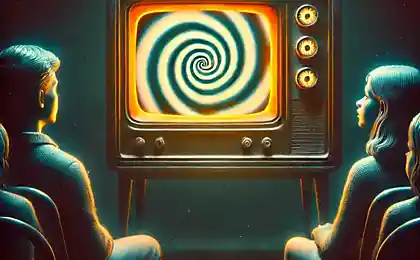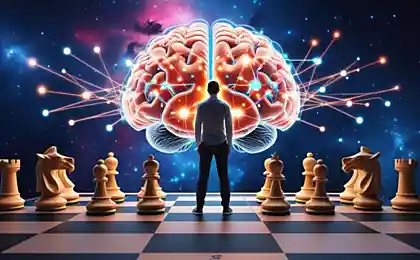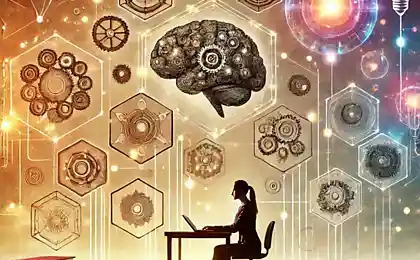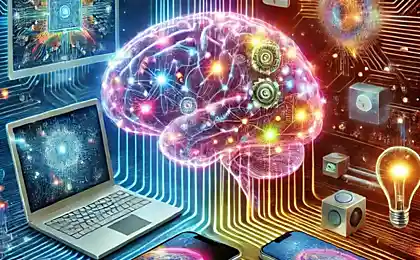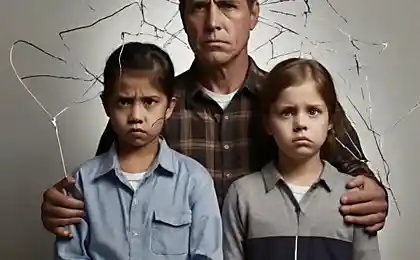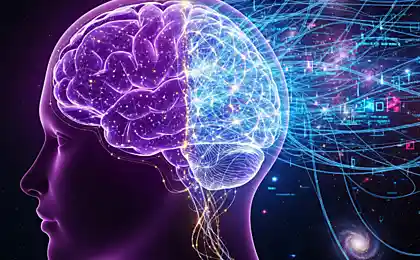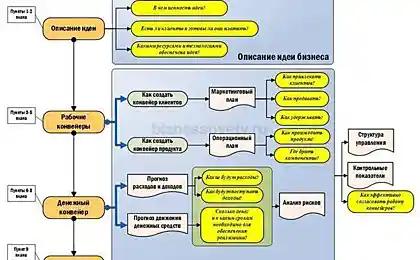361
How to Develop Critical Thinking Without Becoming a Victim of Myths

"Sensational discovery!" In just three days you can ..." - the number of such headlines in the media today is huge. Social networks, news portals and even our close friends can spread information, the truth of which is very doubtful. In the twenty-first century, when access to content is almost limitless, the ability to separate facts from fiction, verify the reliability of sources and recognize where manipulation is hidden is not just a skill, but a necessity for survival in the information field. This is why we need critical thinking.
In this article, we will analyze what critical thinking in the modern sense, why it is easy to become a victim of myths and propaganda without it, as well as offer life hacks and exercises that will help strengthen your intellectual independence. The material is aimed at a wide adult audience, who aspire not just to “pass the news through the stream”, but to be able to ask questions, analyze arguments and, ultimately, make informed decisions.
Main part
1. What is critical thinking and why is it important?
Critical thinking is the ability to rationally and objectively evaluate information, ideas, and arguments without relying blindly on emotion or social influence. According to the American Psychological Association (APA), people with developed critical thinking skills are less likely to be influenced by pseudoscientific claims and aggressive propaganda, and their personal and professional decisions are more balanced.
- Essence: Critical thinking does not ignore feelings and intuition, but always checks facts and arguments.
- Criticism ти negative: This does not mean that you need to see everything as a conspiracy, but only a sign of willingness to challenge the idea constructively.
2. How we become victims of myth and manipulation
Contemporary cognitive psychology highlights several factors why people easily believe myths and deception:
- Cognitive distortion. Such well-known effects as “confirmation bias” (we look only for facts that confirm our point of view), “halo effect”, etc., are abused by manipulators and sellers of “easy solutions”.
- Emotional resonance. When a message evokes fear, hope, and resentment, we often forget to check the factual side of the question, revelling in the emotion itself.
- Trust in authority or the opinion of the majority. If some “authority” (blogger, friend, public figure) says something, we tend to believe, even if there is no logical justification.

Life hacks and step-by-step tips for developing critical thinking
1. Practice a “five-step information verification scheme”
- Step 1. Source: Who's talking and why? Is the site, the author, the analytical center reliable?
- Step 2. Evidence: What arguments are presented in support? Are there any references to research, statistics, or primary sources?
- Step 3. The context: Are the quotes taken out of context? Maybe the numbers say one thing and the conclusion is another?
- Step 4. Alternative explanations: Sometimes the article gives one version of events, but it is worth looking for a second, third.
- Step 5. Outcome assessment: Whether you believe it fully, partially, or skeptically, and why.
2. Look for refutations and counter-arguments
When you encounter an interesting hypothesis or “sensational news,” try specifically to find a counterexample. This is similar to the way hypotheses are tested in science: the scientist seeks not only confirmation, but also refutation. If you can’t find arguments against it (rather than just not looking for it), the hypothesis seems more convincing.
- Example: You read that there is a miracle diet that reduces weight by 10 kg per week. Try to find investigations about such diets, opinions of doctors, reviews of people. Most likely, alarming facts will be found.
- Benefits: This approach reduces the risk of falling into the trap of “reaffirming your expectations.”
3. “Slowdown” before reposts and hasty decisions
The modern rhythm of life pushes for immediate reactions. But it is in such situations that manipulators use “header-shock” or “screaming news.” Try to implement a simple rule: if something causes you a violent emotion (resentment, delight), pause.
- How to apply: Before you forward the news to your friends, wait 5-10 minutes, read it again and ask a few questions (who is the author, where is the data?).
- Effect: Often during this short period, the emotion subsides, you begin to analyze, and often decide to “wait with the repost, first check”.

4. Recognize manipulative speech techniques
Many fake news and pseudoscientific theories use certain speech techniques to capture attention and bypass a critical barrier:
- Emotional pressure: “Global threat!” Save yourself!, "At once!"
- Appeal to authority: A scientist with 20 years of experience (name unknown) proved it. . . ?
- Generalizations without facts: "All progressive people think so," "Scientists have proven (no link)"
- False dilemmas: “Either you support it or you are the enemy of progress.”
5. Exercise logic and reasoning
Despite the seeming “old-fashioned”, a basic knowledge of formal logic, the ability to build and refute arguments is one of the most important factors in critical thinking. If you understand logical errors such as “post hoc ergo propter hoc” (then because of that), “ad hominem” (the transition to personality instead of argument), you will not become a victim of manipulation.
- Council: Read popular books on logic and argumentation, where real-life examples are parsed in accessible language.
- Exercise: Try watching political debates or public debates, writing out logical errors of participants.
6. Use fact-checking tools and proven sources
There are already fact-checking platforms on the Internet (FactCheck, Snopes, StopFake, etc.). They promptly check questionable news, denying fakes and giving links to primary sources. Teach yourself to spend a few minutes searching for a “fact” that sounds too good (or too bad) before believing in a “fact” that sounds too good (or too bad).
- Checklist: When you meet the shocking news: see if the fact checkers have already taken it out. Find the “back side” of an opinion.
- Example: Scientists have shown that coffee can extend life by 20 years. Look for: was such an article in a peer-reviewed journal, does it have scientific methodology? Check reputable media resources (Nature, Science, The Lancet) for mentions.
7. “Collective brainstorming” in the environment
Critical thinking increases when you interact with people who are also eager to verify facts. By creating informal groups (friends, colleagues, forums), you can work together to deconstruct “suspicious” stories and opinions. Such an exchange develops the skills to argue correctly, rely on logic and not turn the discussion into a conflict.
- Format: online chat rooms with a critical focus, where participants share links and make a brief analysis of information.
- Caution: Avoid echo chambers where everyone holds the same position and there is no room for alternative views.
8. Devil's Advocate Exercise
One of the most effective techniques is to consciously take on the role of an “enemy” of one’s own point of view. Make all the arguments against it. Imagine that your position may be wrong, and come up with counter-arguments. If you are able to do this convincingly, then you have appreciated the points of contention. If you can’t find arguments against it, maybe your view is really solid.
- Practical application: Use this technique before major decisions – for example, when choosing a new job, buying a home, changing careers.
- Advantage: You get a bigger picture, you see the risks and you know how to minimize them.

9. Explore history and context
Many myths and propaganda narratives are rooted in “forgotten” historical facts or intentionally distorted ones. To avoid becoming a victim, it is helpful to have a basic historical understanding of events and the context from which an idea originated. This does not mean being a scholar-historian, but at least knowing the key milestones that are often rewritten in myths.
- Mini history course: This will help you see that some “innovative” ideas may be old misconceptions.
- Geopolitical and cultural context: When assessing news from other countries, understanding their culture and past often dispels stereotypes.
10. Don't be afraid to change your mind.
And finally, the most important lifehack: critical thinking involves a willingness to admit mistakes and update views when new facts emerge. This is not a “betrayal” of one’s ideals, but a normal sign of intellectual flexibility. Numerous studies, including APA studies, show that people who are able to correct their point of view are less likely to fall into dogmatism and mental rigidity.
- Conclusion: Recognize that truth can be complex and the world can change. Learning is a strength, not a weakness.
Conclusion
In the age of information overload, when fake, pseudoscience and aggressive propaganda fill the space, critical thinking becomes not a luxury, but a vital skill. It protects against unconscious manipulation, allows you to make informed decisions and form your own picture of the world without blind faith in “authorities” and “loud headlines”.
The life hacks described in the article are only part of a huge arsenal of techniques developed by psychologists, logicians and scientists in the field of communication. But even small practices, such as a “five-step verification scheme” or a “devil’s lawyer,” can significantly increase your level of intellectual protection. The main thing is to persevere, not to succumb to laziness and remember: being an “uncomfortable” interlocutor who asks questions is sometimes much better than being pleasant but easily suggestible.
By developing critical thinking, we protect ourselves from myths, manipulations, and false promises, and strengthen our ability to see reality in all its complexity. It is this combination of openness to information and consistent fact-checking that gives us freedom and confidence in our own decisions, which is important for any person who seeks a meaningful and harmonious life.
Success Algorithm: How to Apply an Engineering Approach to Life's Tasks
The Psychology of Happiness: How to Be Happy Every Day
